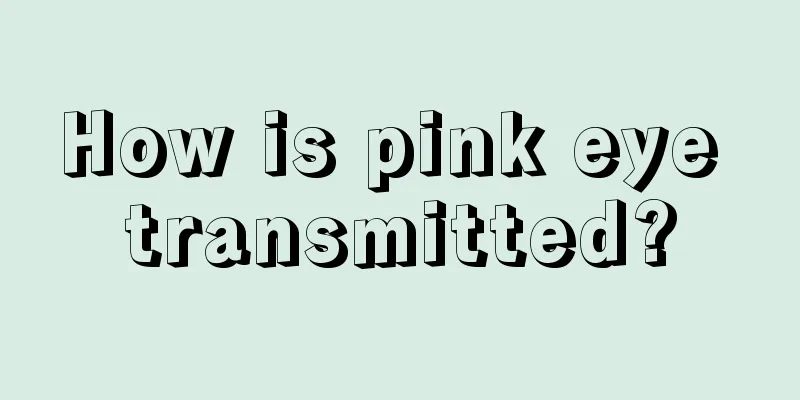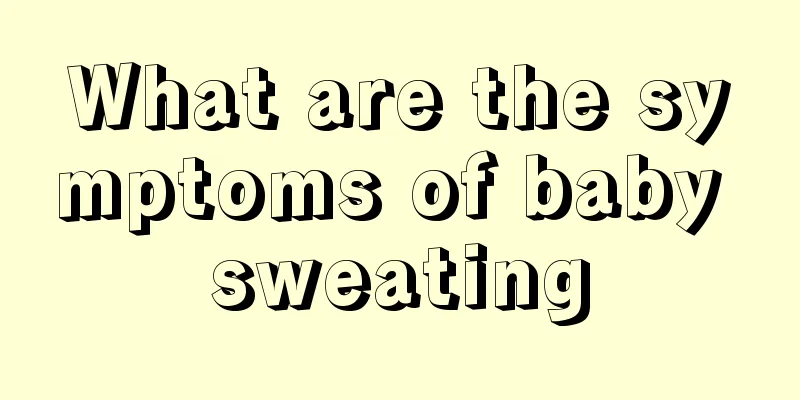How is pink eye transmitted?

|
Conjunctivitis is a contagious eye disease, and there are many ways of transmission, especially in kindergartens, hospitals, schools, etc., which may become routes of transmission. It is recommended to seek medical attention when similar symptoms appear. 1. In fact, there are many treatments for conjunctivitis, so after getting conjunctivitis, the most important thing is treatment. But often, conventional treatments don't have much effect on conjunctivitis. Moreover, if we understand how conjunctivitis is transmitted, it will be of great benefit to the treatment of conjunctivitis. Let’s take a closer look at how conjunctivitis is spread. 2. Conjunctivitis is an eye disease transmitted through contact, such as contact with towels, face washers, faucets, door handles, swimming pool water, public toys, etc. used by patients. Therefore, the disease often spreads widely in collective units such as kindergartens, schools, hospitals, and factories, causing epidemic outbreaks. 3. Conjunctivitis usually affects both eyes first. In the early stages of the disease, patients feel hot, burning, photophobia, and redness in their eyes. They feel a sharp pain in their eyes, as if sand is entering their eyes. Then the eyelids become red and swollen, with a lot of mucus, photophobia, and tears. When getting up in the morning, the eyelids are often stuck with secretions and are difficult to open. Some patients have small bleeding spots or hemorrhagic spots on the conjunctiva, the secretions are mucopurulent, and sometimes a grayish white pseudomembrane forms on the surface of the conjunctiva. There may be grayish white infiltration spots on the edge of the cornea. Severe cases may be accompanied by systemic symptoms such as headache, fever, fatigue, and preauricular lymph node enlargement. 4. Conjunctivitis generally does not affect vision. If a large amount of mucopurulent secretions adhere to the surface of the cornea, there may be temporary blurred vision or iridescence (rainbow-like aperture in front of the eyes). Once the secretions are wiped off, vision will become clear again. If bacterial or viral infection affects the cornea, photophobia, tearing, and pain will worsen, and vision will also decrease to a certain extent. 5. Conjunctivitis develops rapidly, usually within 1 to 2 days of bacterial infection, and most cases affect both eyes. The disease is highly contagious. Since the immunity is low after recovery, the patient can be infected again (the disease can be contracted again if the patient comes into contact with the patient again). Anyone can get the disease, from infants a few months old to people in their 80s and 90s. The disease spreads quickly. After contracting conjunctivitis, it often only occurs in one person, and within 1 to 2 weeks, the disease spreads widely to the whole family, kindergartens, schools, factories, etc. |
<<: What should I do if my baby has conjunctivitis?
>>: What is the cause of baby's baldness on the pillow?
Recommend
What should a 5-year-old child with poor resistance eat?
Children have poor resistance, so try not to take...
Is 37 degrees Celsius considered a fever for a baby?
When infants are just born, their bodies are in a...
What foods can a nine-month-old baby with moderate anemia eat?
Babies are prone to anemia during their growth. A...
Baby milk powder has a bath after mixing
As the first food for babies, parents attach grea...
What to eat for a 4-year-old with constipation
The most common gastrointestinal disease in child...
Dietary taboos for children with ADHD
What are the dietary taboos for children with ADH...
What to do if your newborn baby has tears in his eyes
The care for newborns must be comprehensive. Many...
Can children's pupils be dilated when they have eye inflammation?
If you have ever had an eye examination, you actu...
What should I do if my child has weak spleen and stomach?
Children's physical health is always a concer...
What to do if your child has a red butt
Red buttocks is a common condition among babies. ...
What to do if your child has roundworms in his stomach
It is normal for children to have roundworms in t...
How to treat intestinal flatulence in newborns
Many parents have reported that their babies have...
Parents must remember the symptoms of white spots in children
Vitiligo in children is a common phenomenon in da...
The child's throat is inflamed and a little white
Generally, children have low resistance and poor ...
What are the treatment methods for tonsil suppuration in children?
Children's bodies are relatively weak. If the...









